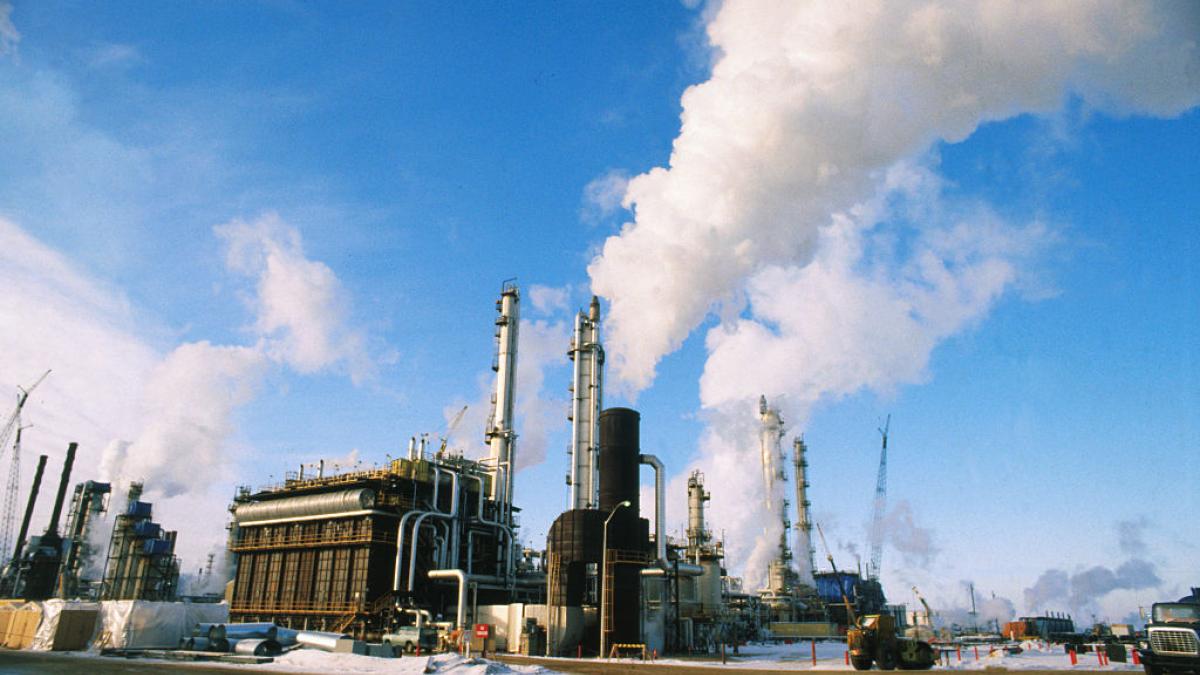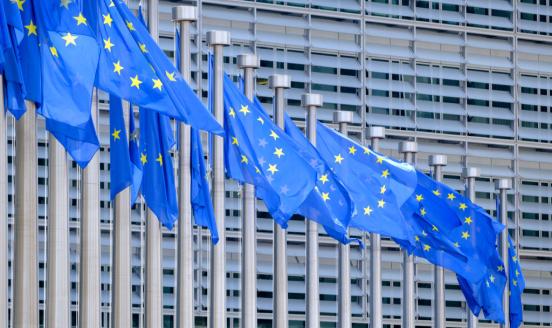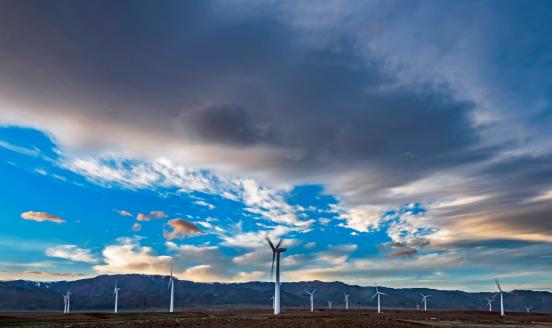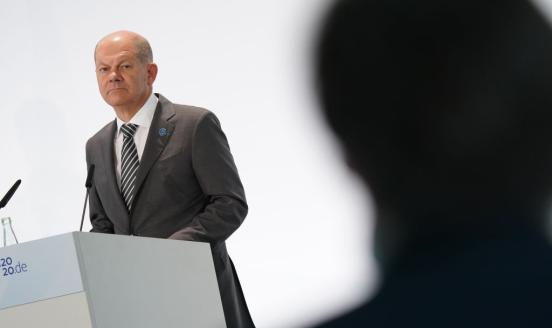Four questions for Germany’s big hydrogen power plan
Germany’s hydrogen strategy will have ripples across Europe and should be discussed more widely

The German government is proposing to invest billions of euros to support the roll-out of a wave of hydrogen-fired power plants. This is part of a move to phase-out coal plants and to deploy large volumes of wind and solar generation.
Details of the hydrogen plan – the Kraftwerksstrategie or KWS – became available on 5 February through a press release from Germany’s Federal Ministry for Economic Affairs and Climate Action
1
See BMWK press release of 5 February 2024, ‘Einigung zur Kraftwerksstrategie’, https://www.bmwk.de/Redaktion/DE/Pressemitteilungen/2024/02/20240205-ei….
, which confirmed government agreement on the scheme. The plan is now subject to the approval of the European Commission and negotiations with the German parliament.
The planned hydrogen subsidies would have a transformative impact on both the German and European electricity markets. But discussions on the plans during 2023 were the privilege only of those inside ministries. Given the importance of these plans, the lack of public debate or transparency so far, especially at European level, is concerning.
In this context, and to inform the debate that will now start, we pose four questions: Why hydrogen? What are the ramifications for the European market? Where in Germany? By when should coal be phased out?
An unprecedented transformation of the German electricity system
Germany wants 80 percent of domestic electricity generation to be renewable by 2030, up from 44 percent in 2022
2
See Ember interactive tool: https://ember-climate.org/data/data-tools/data-explorer/.
. Specifically, this involves reaching an installed generation capacity of 215 gigawatts solar, 110 GW onshore wind and 30 GW offshore wind by 2030, more than doubling existing capacities in the next six year
3
In 2023, Germany had 80 GW solar, 60 GW onshore wind and 8 GW offshore wind installed capacity.
.
Germany’s governing coalition must also decide whether to bring forward the legally-specified coal phase-out date from 2038 to 2030. Bringing it forward would imply replacement of an additional 17 GW of lignite and coal plants by 2030
4
See SMARD, ‘Coal phase-out under KVBG Act’, Bundesnetzagentur, 11 October 2021, https://www.smard.de/page/en/topic-article/5892/206022.
, on top of 13 GW of plants already scheduled for shut down.
All this means restructuring the electricity system at unprecedented speed. To accompany variable renewables, the deployment of clean-generation capacity that can smooth fluctuations in renewable output – both intra-day and across seasons – is necessary. However, exactly how much new capacity is required, and from which technology, is not clear.
What does Germany aim to do? Principles and compromises
The main thrust of the power plant strategy is to provide subsidies for hydrogen-fired power plants. The German government sees these plants as replacements for coal-fired plants that will shut down, and as complements to variable renewable generation, most likely by helping to balance longer-term fluctuations in renewable output. This is consistent with the German government’s grander ambitions for hydrogen. Plans are being drawn up for a hydrogen pipeline network that will cover 10,000 km by 2032
5
Riham Alkousaa, ‘Germany presents hydrogen core network plan in bid for 2045 climate neutrality’, Reuters, 14 November 2023, https://www.reuters.com/business/energy/germanys-core-network-hydrogen-….
, and up to €20 billion will be spent developing the hydrogen industry between 2024 and 2027
6
Leigh Collins, ‘German government to spend €18.6bn on hydrogen from its Climate and Transformation Fund in 2024-27’, Hydrogen Insight, 10 August 2023, https://www.hydrogeninsight.com/policy/german-government-to-spend-18-6b….
.
The government originally wanted to support three types of plant: 1) hydrogen sprinters, 2) hydrogen hybrid, and 3) hydrogen-ready. Sprinters are purpose-built turbines that would run on hydrogen from day one. Hybrids involve the co-location of hydrogen capabilities alongside solar PV or onshore wind, which could even out the electricity sent to the power grid
7
An electrolyser would be used to generate hydrogen during periods of high solar or wind output. This hydrogen could be stored and later used to power a gas turbine during periods of low solar or wind output.
. Hydrogen-ready plants would be plants with gas-fired turbines, and a requirement to provide a detailed roadmap showing how they will switch to hydrogen no later than 2040.
In August 2023, the Federal Ministry for Economic Affairs and Climate Action said it had completed negotiations with the European Commission over provision of state aid to these three types of plant
8
See BMWK press release of 1 August 2023, ‘Rahmen für die Kraftwerksstrategie steht – wichtige Fortschritte in Gesprächen mit EU-Kommission zu Wasserstoffkraftwerken erzielt
. Plans were drawn up to subsidise 4.4 GW of sprinters, 4.4 GW of hybrid plants, and up to 15 GW of hydrogen-ready plants. A first tender was intended for December 2023.
However, like so much of Germany’s planned climate expenditure, this agreement was thrown into question by a November 2023 constitutional court ruling that COVID-19 debt allowances could not be rolled over into Germany’s Climate and Transformation Fund (Klima- und Transformationsfonds, KTF), on the basis that the rollover would breach government spending rules
9
Germany enforces tough spending rules on its governments – the debt brake limits budget deficits to 0.35 percent of GDP. Exceptions are granted in emergencies, and the government had rolled over €60 billion of borrowed money from COVID-19-related debt into a Climate and Transformation Fund. On 15 November 2023, a constitutional court ruling disallowed circumvention of debt limits through special funds and threw into question Germany’s ability to use the Climate and Transformation Fund. For further discussion, see Georg Zachmann, ‘Bypassing the German debt brake and continuing climate spending’, First Glance, 30 November 2023, Bruegel, https://www.bruegel.org/first-glance/bypassing-german-debt-brake-and-co….
. The KTF would have been the source of the originally-planned subsidies for three types of hydrogen plant.
Therefore, a compromise was worked out, culminating in the government’s 5 February announcement
10
See footnote 1.
. The government now plans to subsidise a lower volume of 10 GW hydrogen-ready turbines and has scrapped plans for the 8.8 GW combined sprinters and hybrids. A tender process will offer state support for the construction and operation of four natural gas-fired power plants. Bidders should draw up plans for transitioning to hydrogen between 2035 and 2040. The estimated cost is €16 billion
11
Riham Alkousaa, ‘Germany outlines $17 bln plan to subsidise gas-to-hydrogen shift’, Reuters, 5 February 2024, https://www.reuters.com/business/energy/germany-agrees-subsidy-plans-hy….
.
This would create a demand for hydrogen of 20 TWh annually once all plants are converted, assuming 1,000 running hours per year
12
15 GW running for 1,000 hours per year. Electricity output of 15,000 GWh and natural gas demand of 30,000 GWh assuming 50 percent efficiency.
. Demand of 20 TWh is significant but not disproportionate in the context of wider plans. Total German hydrogen demand today is 55 TWh, of which almost none is supplied as clean hydrogen produced using renewable electricity
13
The overwhelming majority is produced from natural gas, generating large greenhouse gas emissions.
. The German national hydrogen strategy sets a target for between 40 TWh and 75 TWh total clean hydrogen demand in 2030 (BMWK, 2023).
Until plants are converted to hydrogen, they will consume natural gas, again estimated at a 20 TWh annual consumption. This compares to typical annual German gas demand of 800 TWh, which will be substantially lower by 2030.
Why, what, where and when?
Question 1: Why hydrogen?
In principle, hydrogen can be separated from water using electricity, stored underground as a gas, and later used to power a turbine or fuel cell to generate electricity. This cycle makes hydrogen an interesting option for managing, in particular, seasonal fluctuations in future electricity supply and demand (McWilliams and Zachmann, 2021). However, this application of hydrogen is not deployed anywhere globally at scale and remains commercially unproven.
There is no academic or industrial consensus on hydrogen storage as the solution to seasonal energy variations. Electricity-system modelling discusses a range of options for managing 100 percent renewable grids (Heard et al, 2017; Brown et al, 2018). There is a risk that supporting hydrogen-fired turbines exclusively will not be the smartest use of the currently limited German climate-investment budget.
The apparent technologically prescriptive approach of the Kraftwerksstrategie is therefore remarkable. Other forms of seasonal balancing might be considered, including demand response, interconnection or other electrochemical solutions. Tenders could be considered for the provision of clean electricity to the grid at times of peak demand, regardless of technology. The KWS does allude to this concept, promising discussions on a “market-based, technology-neutral capacity mechanism” which should be operational by 2028 at the latest. However, this appears as an afterthought to the primary focus on hydrogen turbines.
Question 2: What are the ramifications for the European market?
European electricity-market integration has been quite successful for plant operation, ie economic signals telling gas and coal plants when they should operate. It has been less successful at sending economic signals for investments (ie when, and where to build new solar or wind plants), because governments have largely taken these decisions into their own hands with auctions and subsidies, justifying this approach on the basis that government subsidies are needed to stimulate innovation and drive down costs. Germany’s plans to auction fixed capacities of hydrogen plants would continue this trend of governments prioritising national planning and overriding European market signals. This is particularly notable coming during a period of negotiation on European electricity market reform
14
See Council of the EU, ‘Electricity Market Reform’, https://www.consilium.europa.eu/en/policies/electricity-market-reform/.
, and has the potential to lock-in national-level thinking for the coming wave of electricity market investment.
Greater European coordination of investment could lead to more efficient results. If European countries are more willing to rely on neighbours, fewer plants will be required to provide back-up electricity generation. In the same vein, decisions by the German government over which plants to subsidise will have spillover effects onto neighbouring countries, as subsidies will influence merit-order decisions and mean that marginal cost decisions alone will not determine market outcomes. This will be especially the case if operational subsidies, and not only capital subsidies, are granted. Reportedly, part of the German plan is to subsidise the price difference between natural gas and hydrogen for 800 hours per year
15
Stefan Schultz, ‘Regierung will Stromversorgung in zwei Schritten umbauen’, Der Spiegel, 5 February 2024, https://www.spiegel.de/wirtschaft/soziales/kraftwerkstrategie-regierung….
.
Question 3: Where in Germany?
Germany operates a peculiar electricity system. It comprises only one ‘bidding zone’ (or marketplace) where a national price is determined based on the merit order. However, the physical electricity transmission infrastructure is at times not capable of moving excess electricity in the north (from lots of wind) to meet excess demand in the south. Consequently, the government asks generators in the north to reduce production (while still paying them as if they produce) and pays generators in the south extra to increase output. In such circumstances, generators in the south are not competitive at market prices and receive a top-up subsidy. These subsidies are recouped in the form of network tariffs included in final electricity prices.
Economically, it would be better to split these zones and allow two separate markets to function. But this would increase prices in the south. Improving transmission capacity between the two zones would also help, although this is a long-standing issue that faces political barriers.
As long as the issue remains unresolved, it is difficult to calculate the required capacity reserves. If Germany were to split the bidding zones, fewer plants would be required as higher prices in the south-west bidding zone would draw in increased power supply from Austrian hydro and French nuclear. Resolving this issue is important for a credible plan.
Question 4: By when should coal be phased out?
The Kraftwerksstrategie is seen as crucial for bringing forward the coal phase out date from 2038 to 2030. Without an earlier coal phase-out date, a less aggressive Kraftwerksstrategie could be sufficient. This implies a trade-off, especially pertinent given the need for compromise.
The cheapest emissions reductions are unlikely to be achieved by subsidising expensive hydrogen power plants to replace coal-fired plants that run only a few hours a year. A package deal to accelerate the coal phase-out and subsidise hydrogen-fired power plants is likely to be an expensive use of Germany’s budget for decarbonisation, at a time when climate investment is desperately needed elsewhere.
However, lots of domestic strategic planning (such as just-transition considerations) relies on a clear timeline. The coal phase-out is a politically visible topic, and not bringing it forward would be controversial both domestically and for Germany’s international climate credibility.
Conclusions
The Kraftwerksstrategie outlines Germany’s intention to subsidise the roll-out of a wave of hydrogen-fired power plants. This plan will be transformative for the German and wider European electricity systems, and deserves wider public discussion.
Specifically, the decision to support only hydrogen technology is not sufficiently supported by the current literature. A technology-neutral system for supporting solutions that can provide electricity at times of peak demand in a complementary manner to wind and solar would be preferable.
The prescriptive, national approach is not compatible with allowing a wider European market to give investment signals. Since the early 2000s, EU governments have subsidised renewable deployment on the grounds that markets would not incentivise sufficient investment. The Kraftwerksstrategie will set a precedent and lock governments into a new phase, in which complementary investments are also planned nationally. From a system cost-optimisation perspective this is inefficient. If it is desirable for political reasons, the implications should be spelled out clearly.



